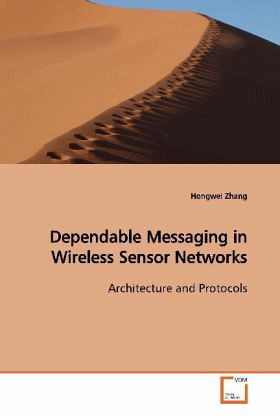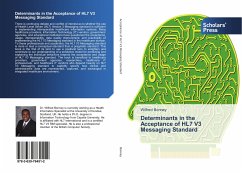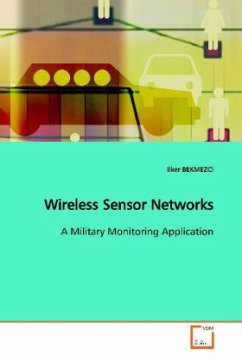
Dependable Messaging in Wireless Sensor Networks
Architecture and Protocols
Versandkostenfrei!
Versandfertig in 6-10 Tagen
52,99 €
inkl. MwSt.

PAYBACK Punkte
26 °P sammeln!
Messaging is a basic service in sensor networks (a.k.a, sensornets). Yet the unique system and application properties of sensornets pose substantial challenges for the messaging design: 1) dynamic wireless links, constrained resources, and application diversity challenge the architecture and protocol design of sensornet messaging; and 2) complex faults and large system scale introduce new challenges to the design of fault-tolerant protocols.To address the aforementioned challenges, this book examines the architecture of sensornet messaging, identifies the design principles of dependable sensor...
Messaging is a basic service in sensor networks
(a.k.a, sensornets). Yet the unique system and
application properties of sensornets pose
substantial challenges for the messaging design: 1)
dynamic wireless links, constrained resources, and
application diversity challenge the architecture and
protocol design of sensornet messaging; and 2)
complex faults and large system scale introduce new
challenges to the design of fault-tolerant protocols.
To address the aforementioned challenges, this book
examines the architecture of sensornet messaging,
identifies the design principles of dependable
sensornet messaging, and presents techniques of
designing fault-tolerant protocols in the presence
of complex faults and large system scale. Taking a
holistic approach to addressing the challenges of
dependable sensornet messaging, this book can help
readers appreciate the basic principles and
techniques of sensornet messaging, and it can serve
as a useful reference for graduate students,
researchers, and practitioners in wireless sensor
networks.
(a.k.a, sensornets). Yet the unique system and
application properties of sensornets pose
substantial challenges for the messaging design: 1)
dynamic wireless links, constrained resources, and
application diversity challenge the architecture and
protocol design of sensornet messaging; and 2)
complex faults and large system scale introduce new
challenges to the design of fault-tolerant protocols.
To address the aforementioned challenges, this book
examines the architecture of sensornet messaging,
identifies the design principles of dependable
sensornet messaging, and presents techniques of
designing fault-tolerant protocols in the presence
of complex faults and large system scale. Taking a
holistic approach to addressing the challenges of
dependable sensornet messaging, this book can help
readers appreciate the basic principles and
techniques of sensornet messaging, and it can serve
as a useful reference for graduate students,
researchers, and practitioners in wireless sensor
networks.












